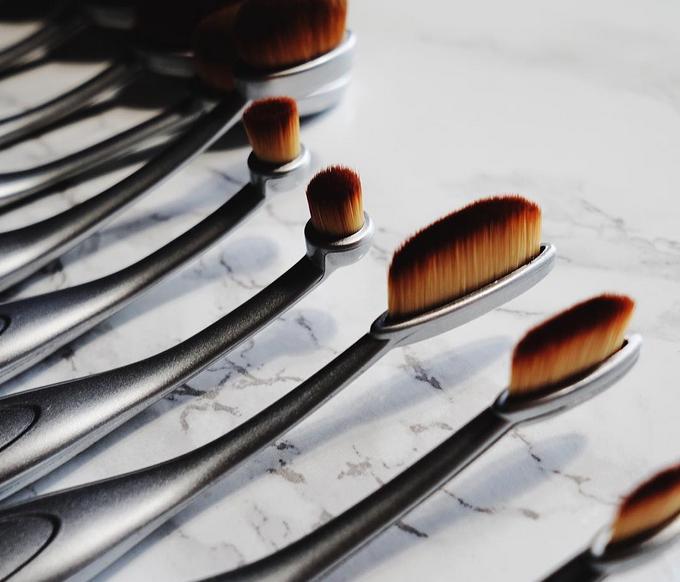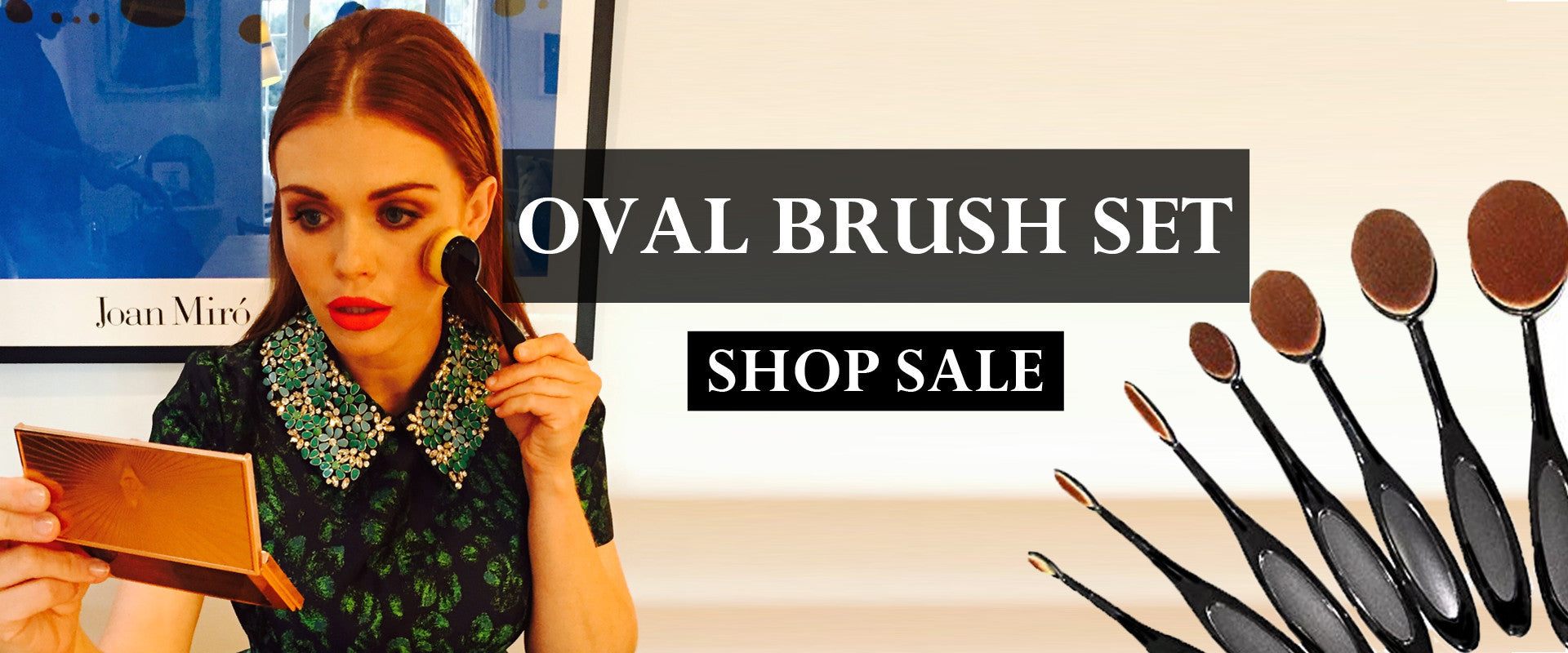His will was no match for his curiosity.
So Amar Gandhi, a partner at My Makeup Brush Set, a Canadian-based online seller of makeup brushes and cosmetics, just had to crack the door and sneak a peek at the entrepreneurial wonder taking shape.
“It was insane,” Gandhi recalls. “I opened the door to peek and saw a thousand people standing in line.”
Gandhi and his team had only been expecting five hundred.
But when it was all said and done at day’s end, the pop-up store My Makeup Brush Set was experimenting with in Ontario would attract more than seven thousand people who had fallen in love with the brand online and were itching to interact with it in person.
“I’ll be honest, I was really nervous,” Gandhi said. “It was proof customers really do care about us, but I worried whether we’d be able to handle it all.”
On the surface, the pop-up store was an unequivocal success:
- The company earned a 10x return on its investment
- My Makeup Brush Set generated $150,000 in sales in one day
- The pop-up resulted in dramatic increases in average order value vs. online
But Gandhi wasn’t wholly pleased.
Demand to get into the store was so great Gandhi could only allow between 100-200 customers in at a time. It meant some customers had to wait outside an hour or more before being allowed inside.
“We let our customers down,” he says. “That’s unacceptable.”
Even worse, with two hours to go before closing time the phones Gandhi and his team were using to check customers out had almost run out of battery power.
Sales were at risk.
So too was the company’s brand and reputation.
And it certainly wasn’t the first time Gandhi felt like apologizing to customers.
Did I Just Get Scammed?
You might blame it all on a cousin of Gandhi’s.
The cousin was a beautician by trade and started her own small salon where she’d sell premium brushes to people who wanted to apply makeup flawlessly.
That was way back in 1998.
Years later, Gandhi notice a gap in the market large enough to drive a truck through; big brands were selling the same brushes he could source for a premium price. So Gandhi decided to compete on price and become a direct-to-consumer volume seller of high-quality makeup brushes and toolkits.
“It wasn’t scary,” Gandhi says of challenging the titans of the cosmetics industry. “We were excited because we knew we could sell the same brushes the big brands were selling for 50-75-percent less.”

The key ingredient, according to Gandhi, would be social proof.
To pry users away from big name brands they know and love, Gandhi hatched a creative influencer marketing campaign designed to earn attention and trust the old fashioned way; through word of mouth testimonials:
- Facebook influencers with 25k followers got free products in return for reviews
- Customers who agreed to review the products on YouTube got free items
- Repeat customers could earn rewards by telling their friends about the brushes
By 2015, My Makeup Brush Set had established an impressive collection of backlinks and testimonials. More importantly, the company had started an online conversation about price and value concerning makeup brushes.
But soon a problem that plagues only the successful afflicted Gandhi.
Sales grew too quickly.
“We had a huge spike in demand,” Gandhi says. “We ran out of inventory in just a few days.”
It was the holiday shopping season.
The influencer campaigns Gandhi had conceived goosed sales between thirty and forty percent.
Customers expecting their makeup brushes in 2-4 days were left wondering what they had gotten themselves into. “We felt terrible,” Gandhi recalls. “Customers were wondering whether they had been scammed.”
But what could’ve become an albatross turned into a differentiator for Gandhi and his team. With heavy hearts and little choice, Gandhi set the company on a customer service path that’s still serving it well today.
“It was actually surprising,” Gandhi says. “Once you speak to the customer and explain the reason for the delay is because the product they purchased is so popular, they actually perceive the product as more valuable and tell us it’s worth the wait.”
The apologies and discount codes for future purchases helped as well.
With trust repaired and even strengthened, My Makeup Brush Set began planning to take market share and grow sales by ramping its PPC ad spend.
But to maintain the trust it had earned back…
The company needed an ecommerce beauty site it could trust to scale quickly and handle the spike in traffic that was on the way.
What’s Peace of Mind Worth to You?
It’s probably cooler to call it Goldilocks pricing.
But business professionals in suits who find just the right pricing for the goods and services call it efficient pricing. “We have to price efficiently because new brands can’t always get away with charging a premium like some established brands can,” Gandhi says. “But you can’t price your product too low or people might think there’s something wrong with it.”
It looks like Gandhi found the sweet spot.

Since its launch in March 2014, My Makeup Brush Set has grown quickly:
- $6.1 million in sales since inception
- However, more than half, $3.8 million, came during the first six months of 2016
By the way, My Makeup Brush Set is just one in a family of brands Gandhi and his team manage. Altogether, the brands are expected to post year over year growth of more than 100-percent:
- 2015 sales of $55 million
- 2016 sales on track to total $120 million
Besides efficient pricing and a social media following that includes roughly 600k followers on Facebook and Instagram, which have powered My Makeup Brush Set’s margins north of twenty-percent, to what does Gandhi credit the team’s success?
“We’re successful, in part, because of Shopify,” Gandhi says. “We tested all of the competitors and Shopify is the best.”
My Makeup Brush Set upgraded to Shopify, an enterprise ecommerce solution for high volume merchants, midway through 2015 to ensure it could handle increased demand. “You can have a functional site up and running in a week and a half,” Gandhi says. “It’s really easy to use and has allowed us to scale quickly.”
One way Shopify helps My Makeup Brush Set operate more efficiently is by merging the company’s digital and physical worlds to create 3D customer experiences with the Shopify POS (point of sale) system. Gandhi used the POS system to accept payments at the pop-up store and simultaneously access online and offline sales reports in real time.
Remember, Gandhi and most of his team forgot to bring their phone chargers to the pop-up store and were running low on juice toward the end. Despite that, every customer who wanted to purchase did so via the POS-enabled phones that still had a charge.
The result was a return on investment double that of a routine My Makeup Brush Set Facebook campaign.
“It was amazing because we took a gamble, made the investment, and people showed up,” Gandhi says. “With Shopify, we never have to worry, and you can’t put a price on peace of mind.”
Wow, We’ve Never Done This Before!
The pop-up was over.
But before Gandhi transitioned back into an online only retailer, his curiosity got the best of him again.
“Wow,” he recalls thinking as he saw the $150,000 in sales for the day. “This is something we had never done before.”
In addition to expanding the product line and entering emerging markets where local fulfillment centers will have to be built out to deliver makeup brushes with the speed customers expect:
- Dubai
- India
- Saudi Arabia
- Brazil
Gandhi and his team are also planning additional pop-up stores in Canada as well as one in every major city in the United States within the next five years.
To prevent customers from having to wait outside an hour, Gandhi promises to double or triple the staff working future pop-ups.
Count on each of them to remember their phone chargers as well.
“You should see how sad we get when we receive a negative review,” he says. “Even if a problem is not our fault we still feel deeply for our customers and are always working to improve their experience.”


